#3rd Infantry Division
Text

U.S. Army Soldiers assigned to 5th Squadron, 7th Calvary Regiment, 1st Armored Brigade Combat Team, 3rd Infantry Division, Fort Stewart Ga., scan the horizon for enemy targets from inside their M1A2 Abrams Main Battle Tank during Decisive Action Rotation 20-04 at the National Training Center (NTC), Fort Irwin, Calif., Feb. 14, 2020. Decisive Action Rotations at the NTC ensure Army Brigade Combat Teams remain versatile, responsive, and consistently available for current and future contingencies.


movement to objective

U.S. Army Captain Charlie Stimpson, an Observer/Coach Trainer with, Cobra Team, Operations Group, as well as members of 11th Armored Calvary Regiment log battle information
Photographs by Specialist Nathan Franco
#american armor#abrams#us army#ntc#fort irwin#11th ACR#5-7 CAV#3rd infantry division#garry owen#rock of the marne
12 notes
·
View notes
Photo

A US Army Soldier assigned to the 3rd Infantry Division, Headquarters and Headquarters Battalion, Division Artillery, smiles and holds her daughter in her arms after her return from Iraq, on July 17, 2003.
Record Group 330: Records of the Office of the Secretary of Defense
Series: Combined Military Service Digital Photographic Files
Image description: A woman in a sand-colored camouflage Army uniform holds a small girl (preschool-aged) on her hip and gazes at her. In the background are other military members embracing their families.
#archivesgov#July 17#2003#2000s#military#U.S. Army#Operation Iraqi Freedom#OIF#3rd Infantry Division
39 notes
·
View notes
Text

Troupes de la 3e Division d'infanterie britannique – Sword Beach – Secteur Queen Red – 8 h 45 – Opération Overlord – Opération Neptune – Hermanville-sur-Mer – Calvados – Normandie – France – 6 juin 1944
Photographe : Sergent James Mapham - No. 5 Army Film and Photo Section, Army Film and Photographic Unit
©Imperial War Museums - B 5114
Au premier plan se trouvent des sapeurs de la 84 Field Company Royal Engineers, qui font partie du No.5 Beach Group, reconnaissables aux bandes blanches autour de leurs casques. Derrière eux, on aperçoit des infirmiers médicaux de la 8e Ambulance de campagne. En arrière-plan, on peut voir les commandos de la 1st Special Service Brigade débarquer de leurs péniches de débarquement.
#WWII#opération overlord#overlord#opération neptune#operation neptune#débarquement de normandie#normandy landings#sword beach#secteur queen red#queen red sector#3e division d'infanterie britannique#3rd infantry division#hermanville-sur-mer#calvados#normandie#normandy#france#06/06/1944#06/1944#1944#d-day
13 notes
·
View notes
Text
youtube
#youtube#militarytraining#Fort Stewart#United States#Military#Honor#National Guard#Army#Georgia#Military Tradition#3rd Infantry Division#Deployment#Flag#American#Ceremony#Infantry#Soldiers#Service#Veterans#Troops#Uncase Colors#Military Ceremony#Patriotism
0 notes
Text
Six NPA Terrorists were exterminated by Philippine Army Troops in Negros Occidental recently
Almost an entire Squad of New People's Army (NPA) Terrorist Animals were exterminated by Philippine Army (PA) Troops belonging to the 47th Infantry Battalion of the 3rd Infantry Division in Tabugon, Kabankalan City, Negros Occidental recently.
This happened during an Encounter when the PA Troops were responding to the reported presence of Armed Men demanding Food and Money from the People in the Area
SOURCE: 6 NPA Fighters killed in Southern Negros Clash {Archived Link}
Check out the Links to my other Social Media Accounts at https://linktr.ee/rhk111
If you like my Work, buy me a Coffee to help support it at https://www.buymeacoffee.com/rhk111
#new peoples army npa#philippine army pa#47th infantry battalion#3rd infantry division#tabugon#kabankalan city#negros occidental
0 notes
Text

19-Kilo
1 note
·
View note
Text
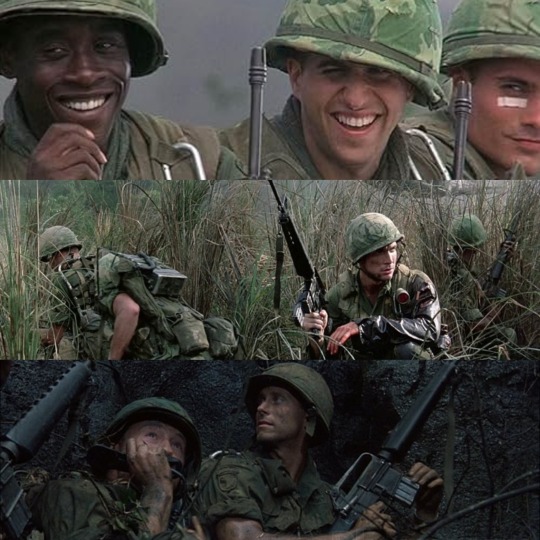
Hamburger Hill (1987, John Irvin)
25/03/2024
Hamburger Hill is a 1987 film directed by John Irvin, inspired by the Battle of Hamburger Hill, which occurred during the Vietnam War.
Vietnam, 1969, a group of young paratroopers of the 101st Airborne Division, under the command of Sergeant Frantz, is sent to the A Shau valley to try to wrest Hill 937 from the North Vietnamese, which, following the battle, will be nicknamed "Hamburger Hill" (meat grinder hill), due to the significant losses suffered by American soldiers.
Filmed between October and December 1986, Hamburger Hill is part of the Vietnam-movie genre of the period, coming out a year after Oliver Stone's Platoon and at the same time as Stanley Kubrick's Full Metal Jacket.
#Hamburger Hill#film#1987#John Irvin#Battle of the Hamburger Hill#vietnam war#vietnam#1969#101st Airborne Division#Valle di A Shau#People's Army of Vietnam#platoon#full metal jacket#percy sledge#otis redding#waylon jennings#the spencer davis group#the temptations#the animals#the supremes#bob dylan#Country Joe and the Fish#war film#united states army#3rd Battalion 187th Infantry Regiment#187th Infantry Regiment#Dong Ap Bia#laos#trench warfare#Bunker
7 notes
·
View notes
Text

#July 16#1969 Members of 1st Platoon#Charlie Company#3rd Battalion#187th Infantry Regiment#101st Airborne Division.#Various_Abrocoma_286#oldschool
17 notes
·
View notes
Text
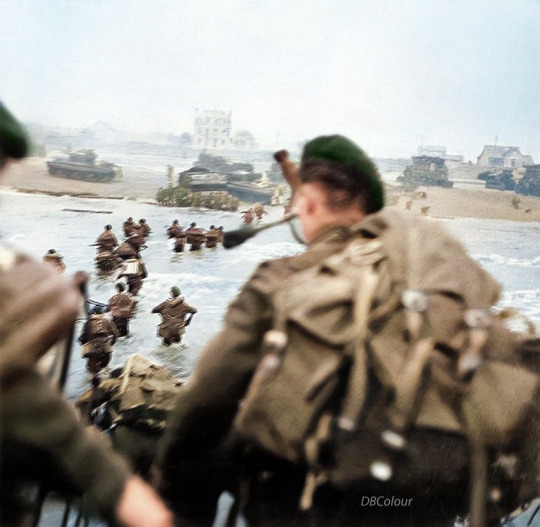

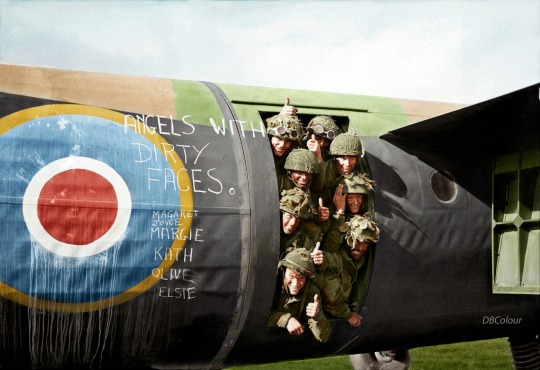

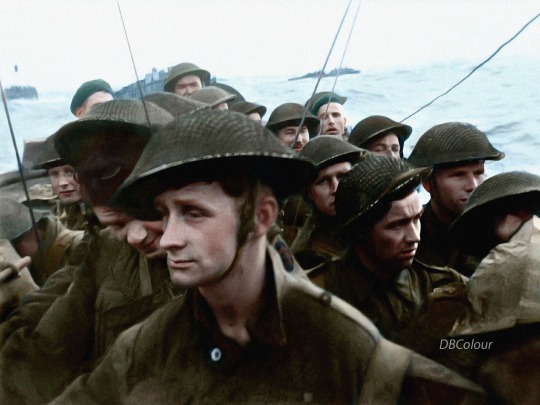

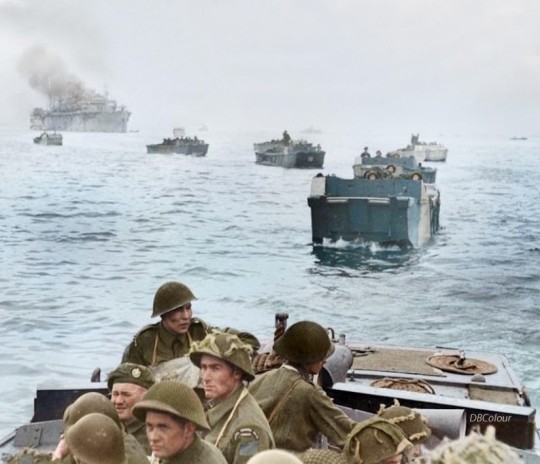

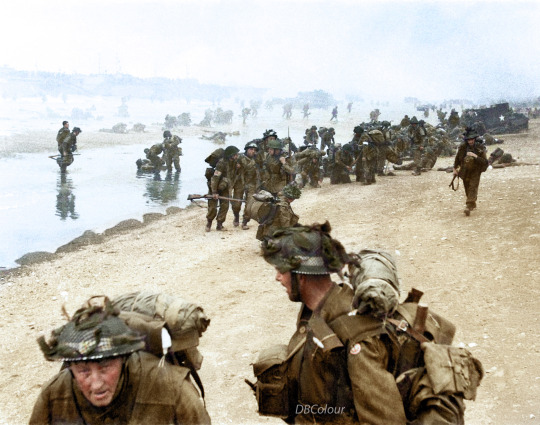
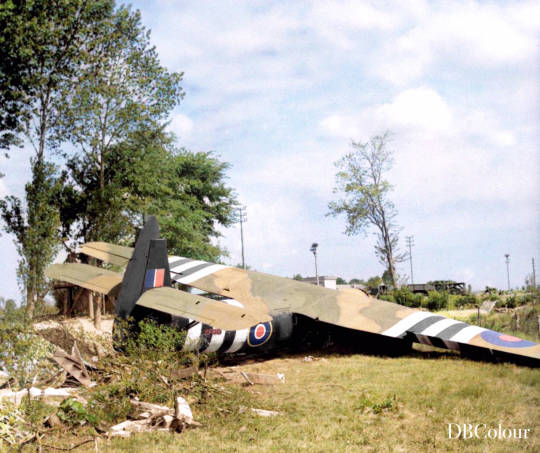
To commemorate the anniversary of D-Day, a short thread of photos colourised by DBColour (Colourising History on Facebook). Descriptions run from top-to-bottom.
Piper Bill Millin, seen here landing on Sword Beach with his bagpipes with Lord Lovat’s Commandos of 1st Special Service Brigade. IWM B 5103.
Commandos of 1st Special Service Brigade after landing on Queen Red beach, Sword area, 6 June 1944.
British Airborne troops smile from the door of their Horsa glider as they prepare to fly out as part of the second drop on Normandy on the night of 6th June 1944.
LCI(L) 135 of the 2nd Canadian (262nd RN) Flotilla carrying personnel of the North Nova Scotia Highlanders and the Highland Light Infantry of Canada en route to France on D-Day, 6 June 1944.
(Library and Archives Canada Photo, MIKAN Nº. 3205043)
Film still from the D-Day landings showing commandos aboard a landing craft on their approach to Sword Beach, 6 June 1944.
LCA (Landing Craft Assault) containing soldiers from the Winnipeg Rifles head for the Normandy Juno beach - June 6, 1944.
Commandos approach Sword Beach in a Landing Craft Infantry (LCI). Ahead, the beach is crowded with tanks and vehicles of 27th Armoured Brigade and 79th Armoured Division.
Troops of 3rd Infantry Division on Queen Red beach, Sword area, circa 0845 hrs, 6 June 1944. In the foreground are sappers of 84 Field Company Royal Engineers. Behind them, medical orderlies of 8 Field Ambulance, RAMC, can be seen assisting wounded men.
A Horsa glider near the Caen Canal bridge at Benouville, 8 June 1944. No. 91 (PF800), carried Major John Howard and Lieutenant Den Brotheridge of No.1 Platoon, 'D' Co., 2nd Battalion Oxfordshire and Buckinghamshire Light Infantry in the early hours of D-Day. © IWM B 5232
#d-day#d-day anniversary#ww2#world war 2#second world war#history#military history#british army#lest we forget#remembrance
294 notes
·
View notes
Text

Troops of the British 3rd Infantry Division come ashore on Sword Beach, 0845 hours, 6 June 1944. They are led by the 84th Company of Royal Engineers. In the middle distance, medics tend to wounded men, while at the rear, commandos of the 1st Special Service Brigade disembark from landing craft. Photo credit: Sgt. J. Mapham/Imperial War Museum.
#history#military history#photography#historic photography#D-Day#Operation Overlord#Normandy landings#British Army#World War 2#black and white#b&w#b&w photography#Imperial War Museum
168 notes
·
View notes
Photo

Juno Beach
Juno Beach was attacked primarily by forces of the 3rd Canadian Infantry Division as part of the Allied D-Day Normandy landings of 6 June 1944. The Canadian troops initially suffered heavy casualties since aerial and naval bombardments had failed to knock out the heavy guns of the German defensive positions, but by the close of D-Day, the beachhead was secured and deeper than at any other point of the invasion.
Operation Overlord
The amphibious assault on the beaches of Normandy was the first stage of Operation Overlord, which sought to free Western Europe from occupation by Nazi Germany. The supreme commander of the Allied invasion force was General Dwight D. Eisenhower (1890-1969), who had been in charge of the Allied operations in the Mediterranean. The commander-in-chief of the Normandy land forces, 39 divisions in all, was the experienced General Bernard Montgomery (1887-1976). Commanding the air element was Air Chief Marshal Trafford Leigh Mallory (1892-1944) with the naval element commanded by Admiral Bertram Ramsay (1883-1945).
Nazi Germany had long prepared for an Allied invasion, but the German high command was unsure where exactly such an invasion would take place. Allied diversionary strategies added to the uncertainty, but the most likely places remained either the Pas de Calais, the closest point to British shores, or Normandy with its wide flat beaches. The Nazi leader Adolf Hitler (1889-1945) attempted to fortify the entire coast from Spain to the Netherlands with a series of bunkers, pillboxes, artillery batteries, and troops, but this Atlantic Wall, as he called it, was far from being complete in the summer of 1944. In addition, the wall was thin since there was no real depth to any of the defences.
Field Marshal Gerd von Rundstedt (1875-1953), commander-in-chief of the German army in the West, believed it would be impossible to stop an invasion on the coast and so it would be better to hold the bulk of the defensive forces as a mobile reserve to counter-attack against enemy beachheads.
Field Marshal Erwin Rommel (1891-1944), commander of Army Group B, disagreed with Rundstedt and considered it essential to halt any invasion on the beaches themselves. Further, Rommel believed that Allied air superiority meant that movements of reserves would be severely hampered. Hitler agreed with Rommel, and so the defenders were strung out wherever the fortifications were at their weakest. Rommel improved the static defences and added steel anti-tank structures to all the larger beaches. In the end, Rundstedt was given a mobile reserve, but the compromise weakened both plans of defence. The German response would not be helped either by their confused command structure, which meant that Rundstedt could not call on any armour (but Rommel, who reported directly to Hitler, could), and neither commander had any control over the paltry naval and air forces available or the separately controlled coastal batteries. Nevertheless, the defences were bulked up around Normandy to an impressive 31 infantry divisions plus 10 armoured divisions and 7 reserve infantry divisions. The German army had another 13 divisions in other areas of France. A standard German division had a full strength of 15,000 men.
Continue reading...
83 notes
·
View notes
Photo

(via USAREUR Photos - 1st Bde 3ID)
1st Brigade, 3rd Infantry Division (Mech), 1976, (Source: Markus Bach)
An M60 main battle tank rolls down a Hohenfels road during unit training at the training area.
#tank#tankers#us army#char#tahk#el tanque de guerra#kampfpanzer#patton#patton tank#Germany#Hohenfels#3rd Infantry Division#Rock of the Marne
25 notes
·
View notes
Text

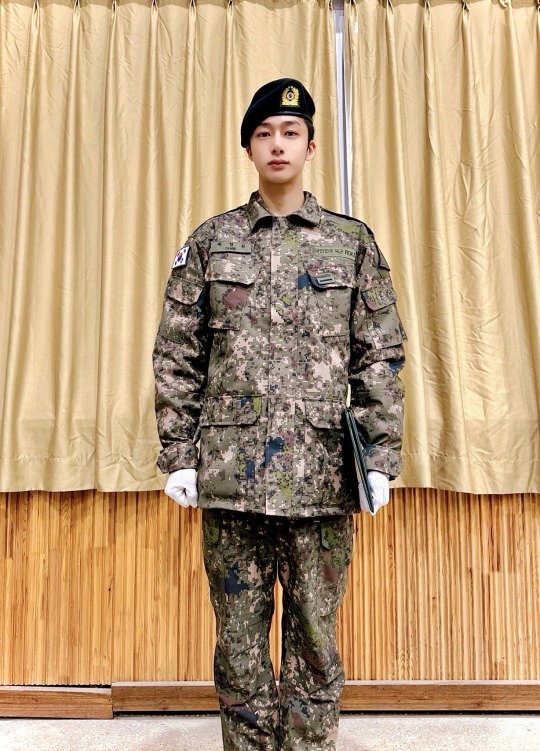
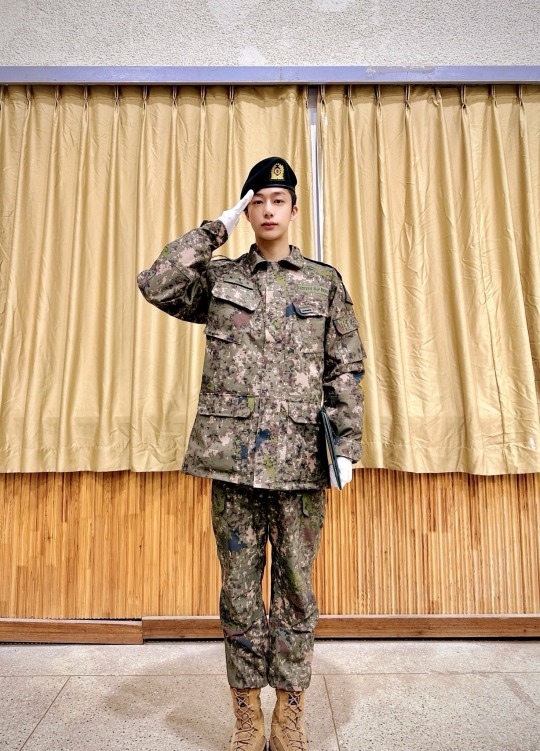
231220 @OfficialMonstaX Twitter Update
📸 231220 #몬스타엑스 #형원 3사단 백골부대 신병교육대 훈련병 수료식 건강한 마음으로 신병교육 훈련을 수료하였습니다☺따뜻한 응원과 격려 보내주셔서 감사드리며몬베베도 추운 날씨, 감기 조심하세요! #HYUNGWON #MONSTA_X #MONSTAX
📸 231220 #MONSTAX #HYUNGWON 3rd Infantry Division New Recruit Training Ceremony I completed the new recruit training with a healthy mind☺Thank you for your warm support and encouragement! Stay warm and take care not to catch a cold MONBEBE! #MONSTA_X
175 notes
·
View notes
Text
youtube
#youtube#militarytraining#Poland#War#NATO#United States#International Relations#Takeover#1st Cavalry Division#Military#Army#Training#Combat#Security#3rd Infantry Division#Mission#Deployment#Alliance#Defense#Soldiers#Troops#Europe.
0 notes
Text
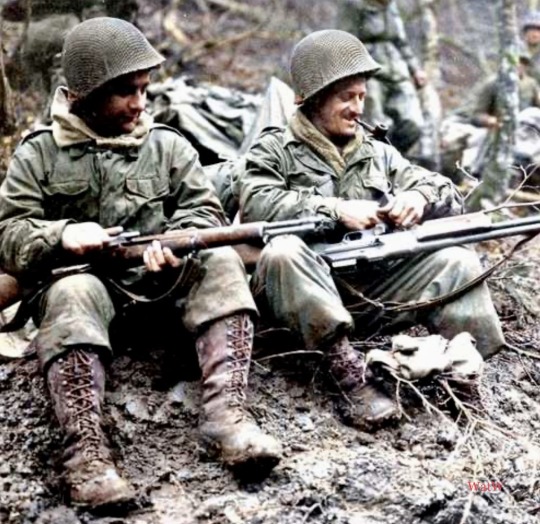
Two US soldiers of the 3rd Battalion, 417th Infantry Regiment, 75th Infantry Division take the opportunity to clean their M1 Garand rifle and Browning Automatic Rifle BAR M-1918 - date and location unknown
#world war two#1940s#worldwar2photos#history#ww2#ww2 history#wwii#world war 2#wwii era#ww2history#browning#usarmy#us army#allies#m1 garand#world war 2 colour photos
254 notes
·
View notes
Text

Germans raise their hands in surrender while being searched for hidden weapons by soldiers of the 3rd infantry Division. Cisterna, Italy. 27 May 1944
50 notes
·
View notes